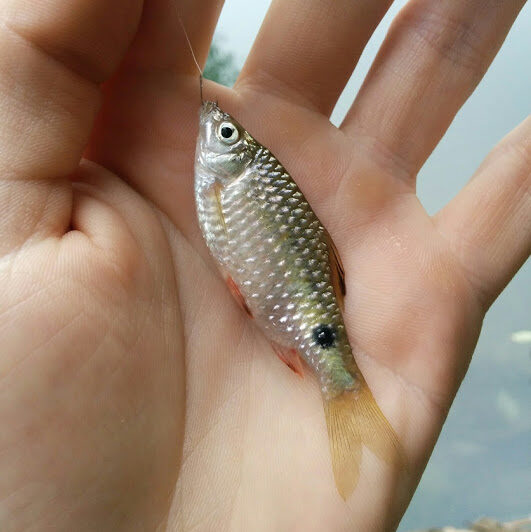It was the year 2010 and I was living in Tokyo Japan. I had been obsessed with fishing my whole life and without knowing it, ended up in fishing nerd heaven. My mind was blown by all the different fishing styles and strange tackle. This was where I was introduced to micro fishing.
One day I was walking through a park in West Tokyo when I noticed some old men spread out around a pond with fishing poles no longer than a couple feet.
I approached a fisherman and asked what type of fishing he was doing. He not only showed me, but let me give it a try. I don’t know if I was more interested in the gorgeous handmade bamboo pole, and the intricate tackle, or the challenge of catching one of the tiny fish biting the bait, but I was hooked.
Since then, I have really nerded out on micro fishing. I’ve caught small fish in Japan, Taiwan, Hong Kong, China, Nepal, and the US. I have visited many Japanese tackle shops, and watched hours of Japanese tanago fishing videos.
There aren’t many people in the US that like micro fishing, but for anyone out there that may have some interest, I would like to pass on what I have learned.
Let’s start with micro fishing gear
Micro Fishing Rod
The type of micro fishing I focus on is the Japanese and Chinese style. I believe that these have been refined the most as they have been micro fishing since the days of Samurai.
They don’t use a western style rod and reel, but rather a pole with a line tied to the end. They dip their baited hook into the water rather than cast out. This can give you better bait presentation, and much better hook sets.
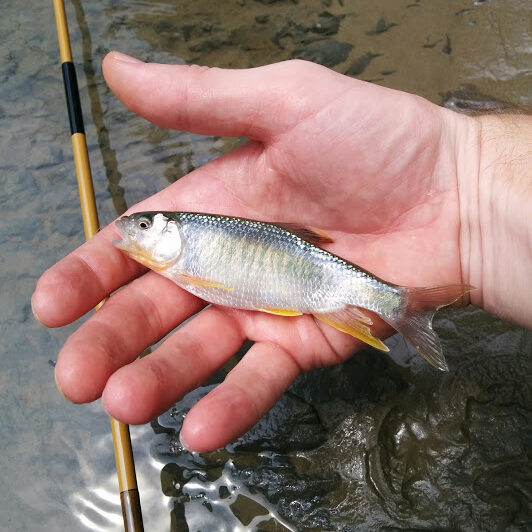
Catching tiny fish has a lot to do with timing. The smallest of fish are not likely to hook themselves. The angler needs to be able to read the bite, and set the hook at just the right time. If your bobber is 20 feet out, you will have a very difficult time hooking up on tiny fish.
If you live in Asia, you can have access to specific micro fishing rods. These will be telescopic and extend out to anywhere from around 1.5 to around 7 feet long. They have ultra soft tips that allow even tiny fish to put a bend in them.
If you are in the US, you will have a hard time finding such a rod. But sometimes you can find cheap telescopic crappie poles which you can take apart and use just the tip sections.
And if you want to start cheap, just use a piece of bamboo or a stick. These won’t give you the bend that a carbon rod will, but they can get you started.
Micro Fishing Reels
I said that I don’t use reels when I do micro fishing, but a lot of people in the west really like to use a reel, so I’ll touch on the topic a little here.
If you search micro fishing online you’ll likely get bombarded with ads for a micro pen rod and reel combo. It is a fishing rod that telescopes down to look like a giant pen.
The reason I don’t use one is because it isn’t really designed for catching micro fish. It can actually handle a full sized bass. You can definitely use one to catch micro fish, but you can also just use a normal fishing rod in the same way.
Micro Fishing Hooks
Finding hooks small enough for micro fish can be difficult in the US. The best place to look would be in the fly fishing section. You can get fly fishing hooks down to size 24, or even 28.
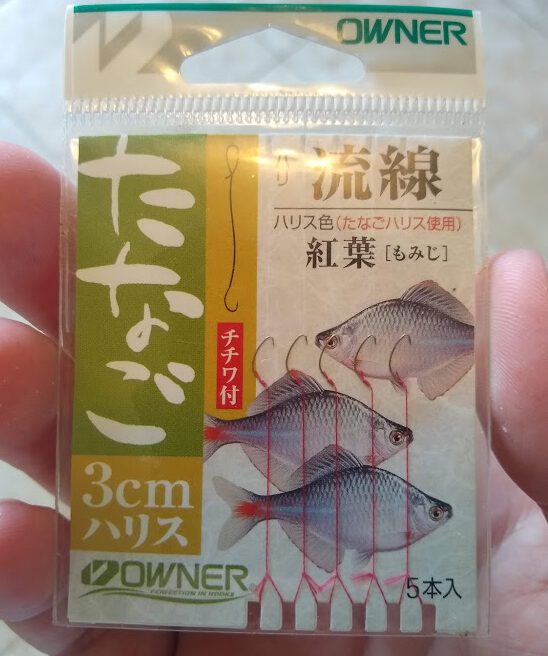
Fly fishing hooks won’t be quite as good as Japanese style komono or tanago hooks. The Japanese hooks are made with very fine wire that allows these hooks to be crazy sharp and have better penetration. But don’t let this stop you! They will still work well as they are, or you can sharpen them with 800 grit sandpaper.
Remember that these small fly fishing hooks have a very small eye, so you’ll need ultra thin fishing line to thread through the hole.
Micro Fishing Line
The best fishing line to use for micro fishing that is readily available in the US would be fly fishing tippet. Tippet comes on a little round spool and in different sizes. Use size 6x, 7x or 8x, 8x being the smallest. It can be difficult to find 8x, but you should be able to get 6x or 7x fairly easily.
Tippet can be a little expensive, so you can also use 2 lb. test or even 1 lb. test, if you can find it. Since you are just using a piece the length of your rod, you don’t need much.
Micro Fishing Floats
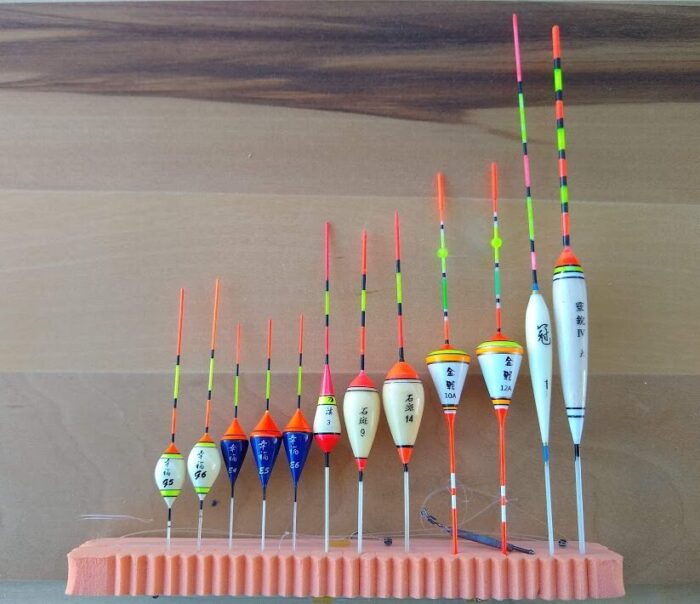
Using a proper micro fishing float can greatly improve your chances of success. Once again, anglers in the US should turn to the fly fishing section. Look for “strike indicators.” These are basically small bobbers that fly anglers use.
There are many different strike indicator materials and styles. Some are like plastic bubbles, others are foam beads that get pegged onto the line with a toothpick. Just avoid the yarn for our purposes.
If your local store doesn’t carry fly fishing stuff, then you can look for corkies. These are also small foam beads that can be pegged onto a line with a toothpick. They come in different sizes, so maybe grab a few sizes and make sure you use one that is big enough to float your rig.
Micro Fishing Tackle
You don’t need much other than hooks, line and a bobber for micro fishing, but it can sometimes be useful to have some micro splitshot. If you can find some with a diameter of less then 2 mm, these would be best.
You can find micro splitshot in Asia and the UK, but I have yet to find any in the US. You can get away without splitshot though, so don’t let this stop you.
Bait for Micro Fishing
Choosing your bait has a lot to do with size of the hook and fish you are catching. Blood worms work well, but need a very small hook. Maggots or spikes are another great bait and will work on a size 24 hook.
In Japan, anglers will make baits out of egg yoke and flour for tanago. They can also buy dough baits that have a high gluten content. You can make your own gluten bait with instant mashed potatoes and wheat gluten.
When fishing with micro tanago hooks, the point is too small to pack bait onto. Instead, the hook is pulled through a gluten bait and will come out with some gluten fibers and potatoes stuck to it. This is really the only way to bait a tanago hook since the hook is so small.
If you are using a gluten or egg yoke bait with a western hook, you can form a ball in your fingers and put it on the hook. But if the ball of bait is too big, it won’t fit in the tiny fish’s mouth, so pay attention to that.
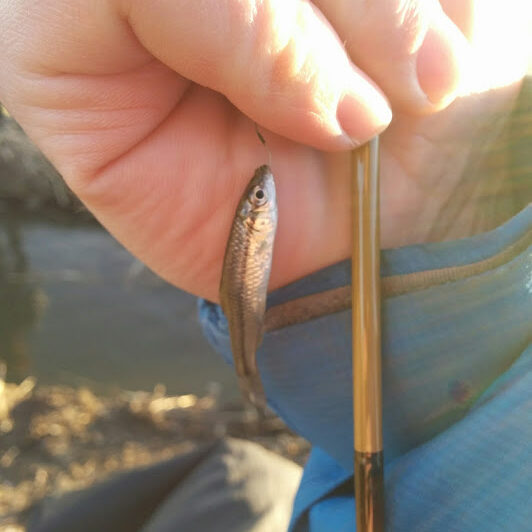
Location
It is easy to find a good micro fishing spot. Anywhere that has big fish reproducing will at some time in the year have baby fish swimming around.
Baby bluegill and bass are very aggressive and easy to catch. But I have also caught little creek chub, and shiners. If you live somewhere more tropical like Florida, there will be a much bigger variety of micro fish to catch.
Conclusion
I’m posting a video below that has a good general introduction to tanago fishing. Unfortunitely we don’t have tanago in the US, but there are plenty of other similar sized fish. This video is in Japanese, but if you turn on the English subtitles, you can get a good understanding of what he is talking about.
视频是由钩公司所有者nd they promote their tanago hooks. These are the hooks that you can’t really get in the US, but if you are determined, you can file fly fishing hooks down to similar points.
